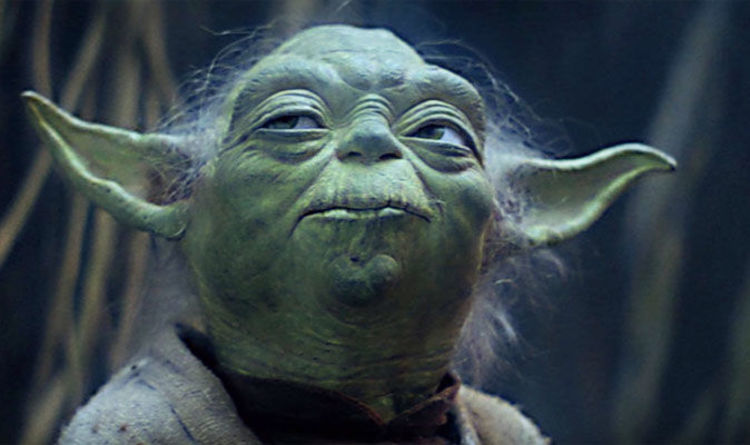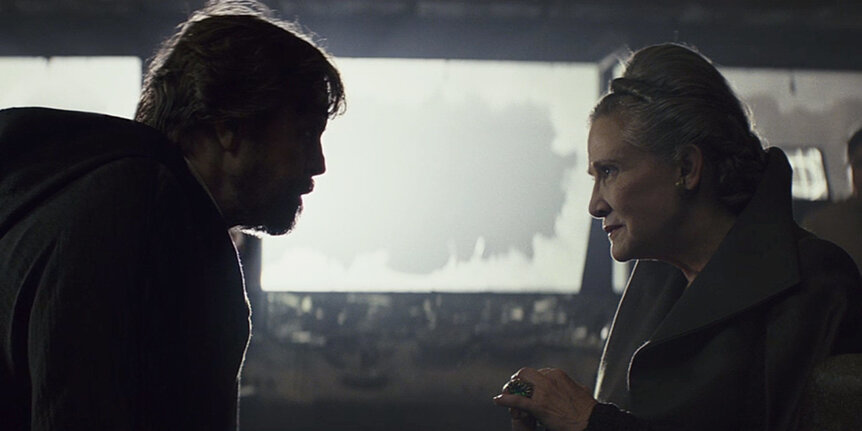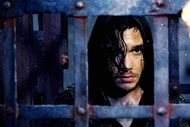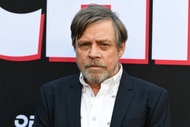The best scene in Star Wars is Yoda's return (and final lesson) in The Last Jedi
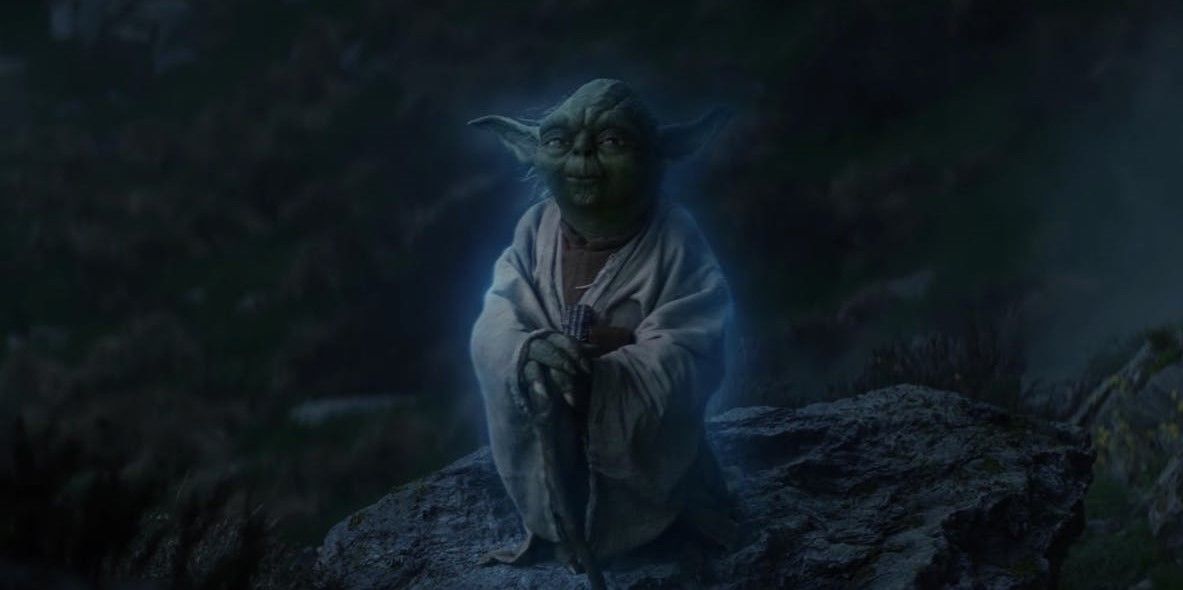
Star Wars: Episode IX – The Rise of Skywalker marks the end of the Skywalker Saga, a nine-movie series that's spanned 42 years and three generations of characters to capture the imaginations and hearts of millions of fans around the world. While it's impossible to sum up everything we love about these films, we here at SYFY WIRE are going to try.
Leading up to The Rise of Skywalker, we're breaking down and celebrating our favorite scenes from the series. Today, we have to talk about Yoda's gleeful return in Star Wars: Episode VIII – The Last Jedi.
It's been two years since Star Wars: The Last Jedi arrived in theaters and shook up the sequel trilogy with an ambitious, challenging middle installment that a lot of people are still extremely mad about. As someone who loves The Last Jedi and ranks it up near Star Wars: The Empire Strikes Back as one of the greatest Star Wars films, on my best days I feel something akin to what the always insightful Patrick Willems described in his love letter to Rian Johnson's film: an abiding, bittersweet desire for those people to see what I see when I revisit The Last Jedi and its tale of failure and redemption.
Some people see the film's great thesis, and indeed its mission statement, as something best summed up by one of the film's most famous lines. "Let the past die," Kylo Ren tells us. "Kill it, if you have to."
For a lot of people, that's what The Last Jedi did. If it wasn't killing the past of Star Wars, then it was gleefully leaving it to wither and die, destroying a beloved franchise with its many twists and subversions and, perhaps its gravest sin of all, desecration of Luke Skywalker's legacy.
That's not what I see when I watch The Last Jedi. For me, the most powerful declaration of the film's ethos is expressed not by Kylo, but by Luke Skywalker, the "Last Jedi" of the title: "No one's ever really gone."
As I see it, The Last Jedi is not a film about killing the past, but about reclaiming and recontextualizing it. It's not a film about regret and repression, but about amends and redemption. It's not about leaving things behind, it's about choosing what to carry with us so it's there when we need it most.
For me, no scene expresses this idea better than the moment when Master Yoda returns to teach Luke Skywalker one final lesson on Ahch-To.
I love the scene for many reasons, not least of which because it feels like something that shouldn't work. If you'd told me the day before I saw The Last Jedi for the first time that Yoda would be returning as a Force Ghost puppet to drill some sense into Luke at the eleventh hour, I probably would have scoffed. No way that'll ever be executed with the same magic that came with the character's first appearance in Empire, right? It just doesn't seem like something we need to see again.
Then he appears, and several key ingredients fall into place all at once to make the three-and-a-half-minute sequence one of the most powerful in Star Wars history. The first of these comes not from Yoda, but from Luke's initial reaction to Yoda.
The point here is to focus on a single scene in the saga, so I'm not going to attempt to relitigate the discussion of Luke Skywalker's arc in The Last Jedi yet again. For our purposes here, let's just agree that he comes to this scene rather broken. He was broken when we rejoined him, even if he was doing a decent job of hiding it, and over the course of the film, he learned that his best friend was dead, his sister was in desperate need of help, and the girl who'd been positioned to possibly be the one person he could pass on his knowledge to was engaged in a secret connection with the living avatar of his past failure.
Luke tried to let the past die in a very overt, almost successful way, and it all came back to haunt him.
So when he first sees Yoda, perched on a rock watching him walk up to the sacred tree to burn it down, he's not entirely surprised. Yes, his eyes light up with a glimmer of both recognition and at least a bit of shock, but Mark Hamill's beautifully restrained performance shows that he half expected Yoda to show up again. After all, almost everyone else had by this point.
Then comes the next key ingredient of the scene, and again the key emotional beat comes from Luke, not Yoda. Luke declares he's about to burn the tree down, and when he hesitates for just a moment, Yoda does it himself, cackling and knocking Luke back with the force of the explosion from a bolt of lightning. Luke at first assumes that this gesture means he was absolutely right all along, in his bitterness and his anger and his conviction that the Jedi were a plague on the galaxy. Then Yoda turns that conviction on him.
"Time it is... for you to look past a pile of old books," he says.
Johnson's writing in the scene is both poetic and precise. Notice that Yoda doesn't say "forget" the old books, or even "burn" the old books. He says "look past," and goes on to note that the books contain nothing that Rey "does not already possess," which we later see is a sly indication that Rey boosted the books from the tree already. Yoda is not advocating for the utter obliteration of the past, as Luke was. He is not, as many of The Last Jedi's haters would argue, trying to kill what came before. He is making a larger point about what Luke has chosen to hold on to and what he has chosen to discard.
No other figure in the entire Skywalker Saga represents the legend and legacy of the Jedi Order as a force for peace in the galaxy more than Yoda. Even in the prequels, when he's often paired with Mace Windu for a kind of one-two punch of authority, it's clear that Yoda will always have the last word. He contains centuries of wisdom and power, and over the course of his nearly 40 years as part of the Star Wars story, the fans have consequently built him up to be the avatar for the Light Side. At one point between A New Hope and The Empire Strikes Back, he literally is The Jedi Order.
And yet, when Luke Skywalker first meets the little green legend, he scoffs at him and proclaims that he's on Dagobah to find "a great warrior." If Yoda is our best indication of what it means to be a Jedi, then Luke Skywalker is — from almost the moment we meet him — our best indication of what it means to mythologize the Jedi. We can see it in the way his tendency to look to the horizon transmutes into his enthusiasm for the Force, a thing he just learned about, in A New Hope. We can see it in the way he's so recklessly prepared to go out and fight rather than exercise patience in The Empire Strikes Back. And we can see it in what we know of the years following Return of the Jedi when Luke was determined to relaunch the Order and avoid the mistakes of the past.
Even after he failed to do that, and lost his own nephew to the Dark Side in the process, Luke's mythologizing of the Jedi continued, but it went in a darker direction. The Jedi were not just a powerful group who made some bad choices; they were the embodiment of everything that was wrong with powerful people who felt they knew what was best. They were arrogant, vain, stoic to a fault, and they ruined everything. In his eagerness to follow in their powerful footsteps, Luke felt he repeated all of their mistakes and was, therefore, a useless last scion of a dead faith.
And it's here that we return to something Luke will soon teach his sister: No one's ever really gone.
It takes Yoda, the legend among legends, returning for the briefest of conversations for Luke to understand that the dark mythos he's built in his head for the Jedi Order, a mythos that includes himself as the Failure of All Failures, is just another lesson.
After all, Yoda failed too. He didn't see Darth Sidious for what he was, and by the time he did, he was too late to stop him. He retreated into an exile of his own, and when the time came to teach again he almost lost Luke to his anger. Anakin Skywalker, Luke's own father, also failed, but in that failure, he found one last chance to pass a mere moment of love onto his son, and in so doing, pass on into the Light.
"The greatest teacher, failure is," Yoda says, summing up the Tragedy of Master Skywalker the Unwise in just five words. Because he, a longtime student of failure himself, is able to say that so concisely, Luke is able to find redemption not by killing the past, but by reclaiming the things he needs from it.
Luke has a master who's still willing to help him. He has a student who believes that there is good left in the galaxy. He has a sister who loves and misses him. And perhaps most importantly in the context of The Last Jedi, he has a legend, a mythology he helped build, that he can weaponize to spark a new fire of resistance.
The scene ends, in the light of the burning tree, with what's perhaps my favorite Yoda line of all time: "We are what they grow beyond. That is the true burden of all masters."
It's Yoda giving Luke permission to accept himself, failures and all, as the legend Rey needs him to be. He no longer needs to leave his past to die. His vulnerability, his honesty, and his failures are all things she needs. They're things we all need, and in learning that last lesson, Luke Skywalker's tragedy becomes a triumph.
Because of that, he'll never really be gone.
